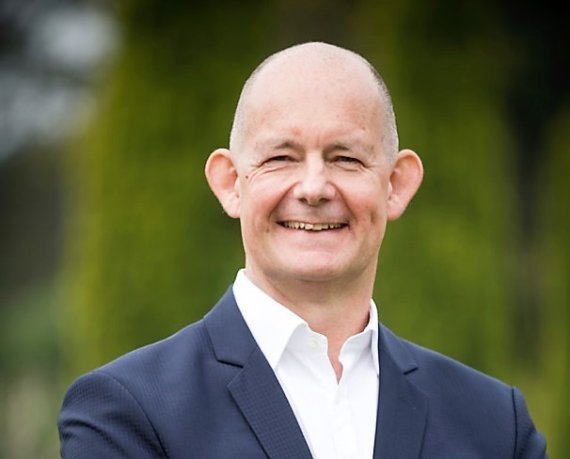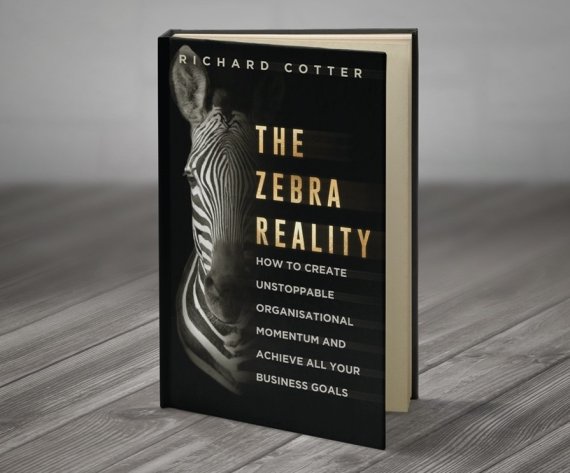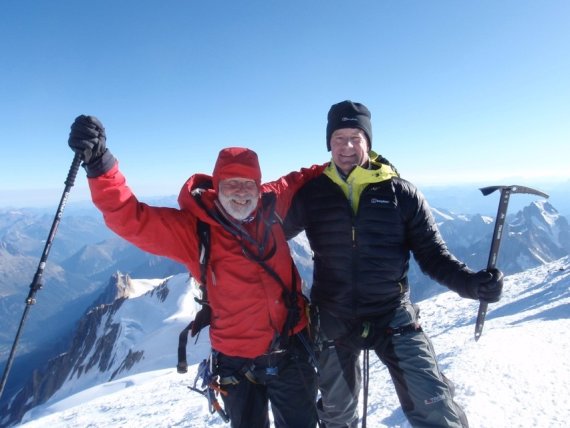
Richard Cotter can look back on a wide-ranging, top-class career: As a professional sportsman, elite performance coach, business leader, high altitude climber and entrepreneur, he is uniquely positioned to provide guidance and insight.
He has held top management positions within and outside the outdoor industry. Among others as Director of Head Sports, Chief Executive of AMG Outdoor, Managing Director of the Brasher Boot Company, Global Brand President of Berghaus and CEO of the Snow & Rock Group.
Since 2015 Richard Cotter is the Chairman and CEO of the Fresh Oxygen Group, a strategy consultancy specialising in driving rapid business performance improvement in consumer facing branded, retail and e-commerce businesses. He is also Chairman of Outdoor Holdings GP - the holding company for the Jack Wolfskin Group. From July 2017 to the beginning of 2019 he was Chairman of Jack Wolfskin KGgA, supporting the business through its restructuring process and was significantly involved in closing of the sale of JWG to Callaway Golf Inc. in 2019.
In 2017 he published the bestseller "Zebra Reality". It focusses on creating unstoppable organisational momentum and the achievement of business goals. How this works, what makes a clear strategy, why employee engagement is essential for success and what makes a good leader – especially in times of COVID19 – he shares with ISPO.com in the following interview.
ISPO.com: Mr. Cotter, your bestseller book is called “The Zebra Reality” Why? And what does it have to do with success overall?
Richard Cotter: If you go into any business in the world and show 100 employees a picture of a Zebra and ask them what it is, 100 will say “it’s a Zebra”. Ask the same 100 employees what the business is trying to achieve, and you will likely get 100 different answers.
This I call ‘The Zebra Reality’…..unless you can get all 100 employees to be clear, consistent and aligned in their understanding of the objectives of the company you are guaranteed to sub-optimise any opportunity, fail to reach your goal or simply be consigned to swim in an ‘Ocean of Mediocrity’.
New generation business leaders must be capable of balancing the here and now with the ability to see what the bright future needs to be. Creating an organisation where business alignment and employee engagement are the two driving forces.

How can this clear vision/understanding of every employee in the company be achieved?
I think that firstly you need to have a really clear strategy and understand why you have a right to exist as a business. This sounds quite simple, but I am staggered by the number of companies I engage with who aren’t clear or who have a fluffy and ill-defined strategic intent. For sure they have a strategy…but when you test it, prod it, poke it…you quickly realise that its more of a wish list than a clearly defined strategy.
A question I have developed is this and it’s my start point with every company: "What is it we do, that if we didn’t exist, our customers couldn’t get anywhere else?" When you have a compelling answer to this question you are starting to build a clear differentiated strategy and positioning.
The second part is to make sure that you align your three valuable resources directly behind your strategic intent. You have
- human resource,
- physical resource,
- financial resource.
If they are all laser focused on delivery of your core objectives, driving greater differentiation and successfully realising the biggest opportunities - then you will build a powerful force which becomes difficult to stop.
The third part is where I see lots of businesses fall when they successfully delivered the first two stages (strategy and alignment) and neglect to deliver the final piece, employee engagement.
It is not enough to have a mission statement on the wall and some values behind the reception desk - employee engagement is an everyday thing. It should be a top priority for business or team leaders and yet they invariably focus more on performance and less on engagement.
What is the key to employee engagement?
The cornerstone of this is communication - yet rarely do leaders invest in their own style and capability as a communicator. Important is, to consistently reinforce the core messages:
- They must be grounded in customer and market insight,
- rooted in clear business logic,
- be easy to take away,
- and must articulate simply the Vision, Purpose and Ambition for the company.
You need to inspire, touch and win the hearts and minds of the organisation. The messages must be engaging and delivered with empathy, you need to be a real person telling a compelling story, it needs to be exciting, tangible yet somehow just out of reach. Most of all it must have a strong sense of ‘why’.
Employees want to be part of something they believe in. They want to be proud, they want to believe in the purpose and the ambition, to create and leave a legacy. Achieve all of this and you will create amazing Momentum throughout your organisation, the magic of momentum which will drive you forward to achieve all of your goals and ambitions.

That’s the theory – but how can it be implemented successfully in daily business?
I see so many business leaders who get hooked up on managing the business instead of leading the business.
Management is a set of processes that keep an organisation functioning, they make it work today, hit this quarter's numbers. The processes are about planning, budgets, staffing, output and measuring performance, in my experience, motivated and highly engaged employees don’t come to work to be part of a process!
Leadership is about change, it’s about aligning people to the vision, creating buy-in, motivation and inspiration.
Ask yourself as a leader: “How much time do I spend on managing the business and how much time do I spend on leading the business?”. If you are brave enough to answer honestly and confident enough to change, you will unleash an incredible power in your organisation.

You compare company goals/personal goals with the ascent of mountain peaks. In your opinion, to what main extent can the comparison be broken down to a company?
In my experience there are amazing similarities between striving for corporate success and climbing big mountains. In both you are challenging yourself to be the best you can be.
1# You start with a clear goal or ambition, to reach the summit, to be the best, the biggest, the most profitable…or whatever your corporate objective is. Sometimes you can see your goal from where you are standing other times you have to imagine it outside of your field of vision.
2# Next you need a clear plan and robust strategy. In mountain climbing you pick your route, map out the camps, figure out what provisions and skillsets you need to summit. In business don’t you do exactly the same? You build your business plan, mapping out the timeline and stage gates along the way. You plan how to use your precious resources in much the same way an expedition leader will use their climbers, their food, their equipment to give themselves the best chance of reaching the summit.
3# Always somewhere along the route it goes wrong, the weather changes, conditions worsen, resources run out. You need to change direction, drop down in height, re-set timelines, establish new camps, learn to handle the adversity and the dark nights. In business this always happens as well, the best plans go wrong, external factors impact the strategy, resources or developments take longer or require new skillsets or new financing. In business I call this “the Difficult Middle” and in my experience how a company handles the difficult middle will determine whether it successfully achieves its goals or not. In much the same way, how an expedition handles mountain adversity will determine whether it reaches the summit or not.
4# Lastly big expeditions need engagement, motivation and momentum…the drive to keep going, to build a team which believes in each other. Which can handle adversity and bounce back stronger, which gets up when it’s easier to stay sitting down…..all climbers have experienced this feeling.
In much the same way businesses need engagement, motivation and momentum…this is created by the pursuit of a common goal, by an emotional buy in to the corporate objectives which needs to be more about Why and less about What. Successful climbers climb ‘because it’s there’ not because of what they can get…engaged employees contribute because of what they can create not because of what they can ‘earn’.
What characterizes a real successful leader - also in view of the current situation based on COVID-19 that affects the whole world?
I believe that the best leaders are the ones that focus on ‘Adding Value not Work’. By this I mean that to be a truly great leader you have to realise that your job is not to make every decision, in fact I would argue that the best leaders don’t actually make any decisions at all.
They facilitate a culture where the leader works for all their employees not where the employees work for the leader. The leader’s job is to hunt for the best talent and motivate them to join the team, to focus on strategy, people, alignment, culture, communication and most importantly stakeholder management.
In the world post COVID19 I think this is truer than ever. The leaders job right now is to
- breed confidence,
- communicate with clarity and conviction,
- be visible and believable.
The challenges are real and they are immediate, you need to be focused on the big objectives, you need to be brave and decisive, you need to protect cash for sure but more than anything you have to be ready to change and adapt. I love this quote from Charles Darwin: "It is not the strongest of the species that survives, Nor the most intelligent that survives. It is the one that is most adaptable to change."
Surround yourself with smarter people and you don’t need to make decisions, but make sure that everyone in the organisation knows the part they need to play in getting through difficult times, mobilise and motivate the organisation to handle ‘the difficult middle’.

 Sports BusinessMental Health Awareness Month: A global appeal
Sports BusinessMental Health Awareness Month: A global appeal
- Awards
- Mountain sports
- Bike
- Fitness
- Health
- ISPO Munich
- Running
- Brands
- Sustainability
- Olympia
- OutDoor
- Promotion
- Sports Business
- Textrends
- Triathlon
- Water sports
- Winter sports
- eSports
- SportsTech
- OutDoor by ISPO
- Heroes
- Transformation
- Sport Fashion
- Urban Culture
- Challenges of a CEO
- Trade fairs
- Sports
- Find the Balance
- Product reviews
- Newsletter Exclusive Area
- Magazine






